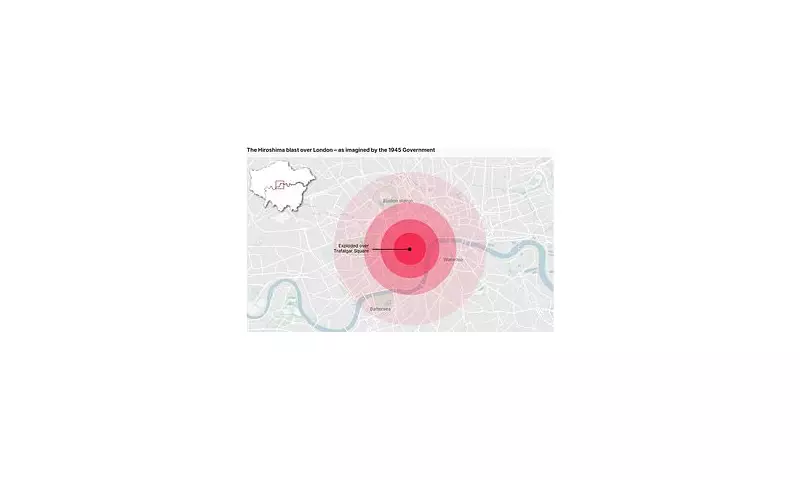
Recently unearthed government diagrams from the Cold War era paint a terrifying picture of what would happen if a Hiroshima-sized nuclear bomb detonated in the heart of London. The classified documents, now made public, reveal meticulous calculations of destruction, casualties, and long-term fallout.
The Unthinkable Scenario
Modelling the impact of a 20-kiloton bomb—equivalent to the one dropped on Hiroshima in 1945—the planners mapped concentric circles of devastation radiating from central London. The immediate blast zone would vaporise everything within a half-mile radius, reducing iconic landmarks to rubble in seconds.
Zones of Destruction
- Ground Zero (0.5 miles): Complete annihilation—buildings, infrastructure and people obliterated instantly
- Severe Damage Zone (1 mile): 98% fatality rate, with survivors facing horrific burns and radiation sickness
- Moderate Damage Zone (3 miles): Collapsing buildings, widespread fires, and third-degree burns
- Radiation Zone (10 miles): Deadly fallout would contaminate the area for decades
Human Cost Beyond Imagination
The documents estimate casualties in the hundreds of thousands, with emergency services completely overwhelmed. Hospitals would be destroyed just when most needed, and the transportation network would cease to function, trapping survivors in a radioactive hellscape.
One particularly chilling notation suggests that "the psychological impact on survivors would exceed our capacity to measure." The planners grimly concluded that no effective civil defence was possible against such an attack.
Cold War Secrets Come to Light
These documents were created during the tense years of the 1950s and 1960s, when nuclear war seemed a genuine possibility. Their release offers a sobering reminder of the apocalyptic stakes of superpower conflict—and raises questions about contemporary nuclear threats.
While the Cold War ended decades ago, experts warn that the spectre of nuclear warfare hasn't disappeared. With nine nations currently possessing nuclear arsenals, including unpredictable regimes, these historic warnings remain disturbingly relevant.





